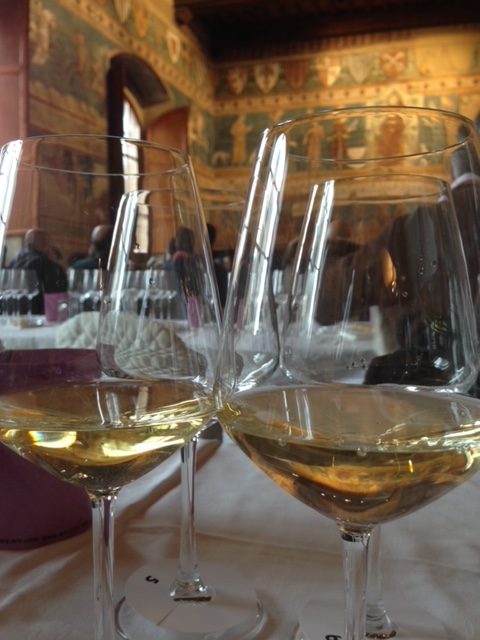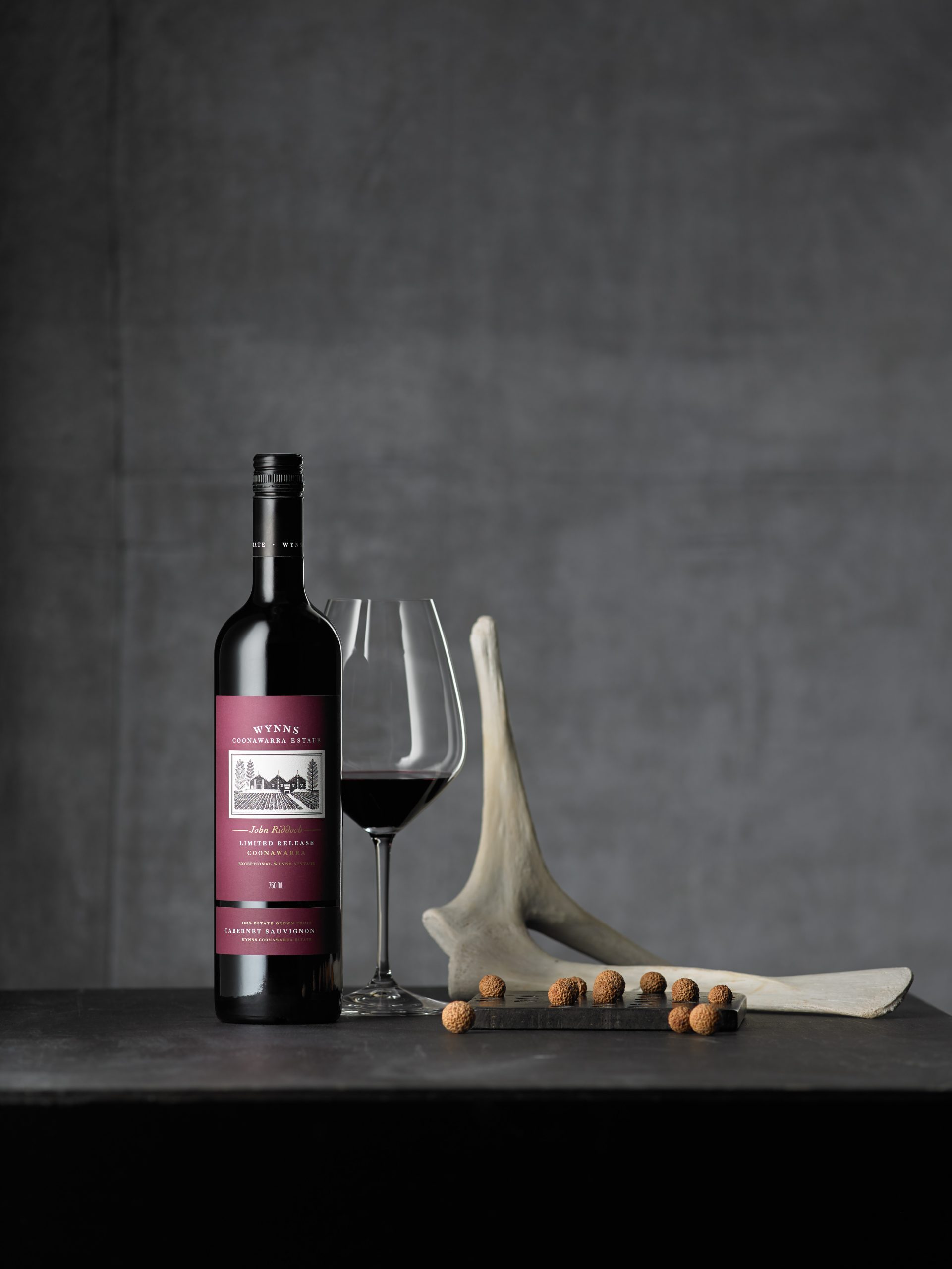Vernaccia di San Gimignano can age amazingly – but are we ready to spread the news?

Tasting notes

1. Montenidoli, Vernaccia di San Gimignano Docg 1997
A deep golden color. On the nose is a majestical experience: sweet aromas of peach and yellow plum, cedar, melon, dried fruit, sweet spices, broom, acacia honey, saffron and finally flint! The palate is smooth and crunchy at once with a mineral and savory taste and a great lingering aftertaste reminiscent of the aromas enjoyed on the nose.
2. Tollena, Vernaccia di San Gimignano Signorina Vittoria Riserva Docg 2011
A decadently luscious oxidative style with an intense yellow/orange colour. Wide and calm, like a sunset. Very complex: flowers, fruit and sweet spices, honey, brine, saffron, hazelnut, roasted almonds. The palate is broad and warm but still reactive. Great velvet touch with a bitter sweet feel and some wonderful toasted bread and apricot jam on the fish.
3. Cappella Sant’Andrea, Vernaccia di San Gimignano Clara Stella Docg 2015
Strawberry blond color. The nose is more reserved than the mouth: it tastes of jasmine, citrus and pollen with a generous and very salty taste. It’s an almond feast together with medicinal herbs, light spices, cedar and mango and a slight metallic hint at the end. Later the fruity notes on the finish.
4. Il Colombaio di Santa Chiara, Vernaccia di San Gimignano Campo della Pieve Docg 2018
A very structured Vernaccia packed with smooth and round glycerin. On the nose there is flint together with the sweetness of acacia flowers and propolis, then the vivacity of gooseberry and pineapple. Even in the mouth it begins soft and decidedly sapid, almost salty, it has a large and “heavy” structure and closes up with some intense fruit flavors with some floral notes. A lovely lingering sour/citrine notes give this wine a great twist.
5. San Quirico, Vernaccia di San Gimignano Isabella Riserva Docg 2019
A spring sun, the bright one, almost angular, but warm. Wildflowers, lemon, vanilla and finally some sweet spices. The sip is delicate and graceful with an increasing sense of power and structure building up. The delightful citrus fruit complexity is complemented by a round gunflint touch and a great creaminess.
6. Marmoraia, Vernaccia di San Gimignano Antalis Riserva Docg 2019
Pleasant, clear, fresh and coherent in aromas and flavors. Citrus complexity, starting from the sweetness of tangerine to the juicy bitterness of grapefruit ending up with hints of lemon flowers. On the palate there’s some great vanilla notes and raw almonds at the end of the sip. An great structure and a refreshing finish.
7. Fattoria San Donato, Vernaccia di San Gimignano Benedetta Riserva Docg 2020
Metallic notes, flint, raw and wildflowers on the nose. Power and intensity on the palate with a distinctive mineral note and some pretty well designed fruit notes. As it lingers on the palate, it develops notes of broom flowers and dried tropical fruit.
8. Il Palagione, Vernaccia di San Gimignano Ori Riserva Docg 2021
Definitely citrine and floral both on the nose and on the mouth, simple and yet not simple and joyful. The palate shows some sweet notes of acacia honey, the sweetness of the juicy white melon and the sourness of the yellow plum.
Partner Content
9. Alessandro Tofanari, Vernaccia di San Gimignano Astrea Docg 2021
An intese golden color. Generous yellow fruit and flowers with contrasting aromas and flavors. On the one hand the juiciness of melon, pear and apple, then the delicacy of chamomile, the sweet-bitter-tart of pink grapefruit, with a touch of flint. In the mouth the sip is calm and full, very mineral, with almost a velvet tannic touch.
10. Panizzi, Vernaccia di San Gimignano DOCG 2022
A reserved, polite, almost shy nose at first . Very clear cut aromas and flavors: wisteria, lilac and lily of the valley to which is added the sweetness of ripe pear and white melon. Then clearly sapid in the mouth, light but warm in the finish. This is a false simple wine hiding a potential of a true fine white!
11. La Lastra, Vernaccia di San Gimignano Docg 2022
Very citrus version but in a delicate way: tt’s like tasting the white part of a Amalfi lemon. The floral notes and the gentle aromatic herbs (lemon balm, rosemary flowers, nepitella) add a lot of complexity. The mouth, on the other hand, develops a lot of character: sapidity, warmth and a certain peppery finish.
12. Cesani, Vernaccia di San Gimignano Cesani Docg 2022
The nose seems reluctant to open: you can recognize the white flowers, the mineral side and a hint of fresh almond. A completely different music plays in the mouth: intense, citrine, the flowers return again and the sweetness of pear juice closes this wine with a fantastic sweet refreshing finish,
13. Ternuta Le Calcinaie, Vernaccia di San Gimignano Docg 2022
Very intense in the aromas of delicate aromatic herbs – such as lemon balm, fresh oregano, lavender flowers, then citrus peel and white flowers, with a touch of vanilla. Perfumes that are reflected on the aftertaste with an intense mineral and white pepper finish.
14. Casa alle Vacche, Vernaccia di San Gimignano Docg 2022
Pear and white melon pulp with a hint of citrine and also a minty touch. On the palate the texture is reach but with a graceful movement: definitely salty with a citrus driven touch then yielding to a sweet finish.
Related news
Castel Group leadership coup escalates
For the twelfth day of Christmas...
Zuccardi Valle de Uco: textured, unique and revolutionary wines




